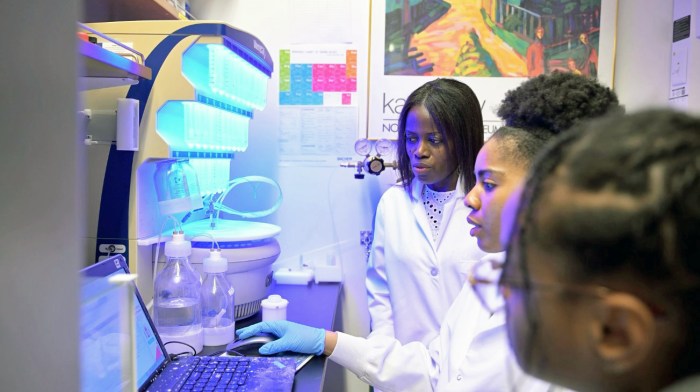It’s old news the coronavirus has disrupted our lives and raised considerable concerns about the digital divide nationwide. Online learning, broadly defined is not new, so why the pandemonium among parents and teachers alike, concerning its exclusive use today? Primarily because the shortcomings of these tools were tolerated, even ignored, while other more traditional classroom approaches were in use. But with Covid-19 forcing schools to remain closed and the potential of another wave of the virus this Fall, remote learning will likely be the new normal. If we have any hope of successfully educating students, we must confront and address the following five challenges.
ACCESS
The coronavirus crisis has forced emergency actions to be taken in low-income communities that had limited or no access to the Internet, digital devices or computers. Internet providers offered free 60-day service to students from K-12 and colleges and universities provided students free devices. This is a quick fix and not a solution. Going forward, we must provide affordable Internet access to everyone and ensure every student has a tablet or computer as part of their personal educational tool kit.
TRAINING
Even if students have access to the Internet and computers, many don’t know how to use these online tools and the dilemma is further compounded when learning shifts to platforms that deliver classes in real-time: Maneuvering video, audio or simply using a program’s chat feature can cause panic among the Internet-illiterate. Many kids, parents and even teachers have been learning on the fly. Training how to use online tools must become an integral part of school preparation.
PEDAGOGY
Teaching online is different than in-classroom instruction. Using course administrative systems is different than simply assigning reading from a textbook and collecting hardcopy assignments. It requires unique skills – knowing how to write on a blackboard or whiteboard or showing a digital presentation is no longer sufficient. K-12 teachers need to complete formal training including courses and fieldwork, while teachers at a college or university, do not. Training in developing pedagogy and in the use of online tools should be required of all faculty.
INFRASTRUCTURE
We can become adept at using online tools, if the basic infrastructure rules remain consistent, but in my 50-year experience as an educator developing this knowledge and familiarity has been difficult because it is constantly changing.
When I began delivering online synchronous lectures 10 years ago, it was via Adobe Connect. Just as I became familiar with this feature, my college switched to Cisco’s WebEx, then Blackboard’s Collaborate. Today, faculty and academic meetings might be held using a number of different programs – Zoom, GoToMeeting, Web Meeting, Google Hangout, WebEx, etc. They all possess similar features, but they are different.
It’s like learning to drive on the right side of the road in the U.S., but during a visit to Great Britain, you must quickly adapt to driving on the left.
The underlying infrastructure of these platforms must be streamlined and resources, in terms of staff and materials, provided to support and assist faculty in effectively using these technologies.
LEARNING OUTCOMES
As the use of online education increases, it’s imperative we assess its impact on student learning. The current belief is that online education is not as effective as the traditional classroom. But how do we know, given we are only just beginning to develop measurement assessment tools for educational outcomes, not just test taking ability?
Our growing tech economy requires an educated workforce with essential skills, such as critical thinking, and we need to develop measures that test student ability to apply their knowledge to solving real world problems.
The whole economy is increasingly moving toward online infrastructure so solving the digital divide is critical as we navigate the next century together. To meet this need will require us to address these five challenges by recognizing they cannot be solved in isolation, but as a single system. Solving the digital divide is just the first step towards improved online learning outcomes at all educational levels.
Stan Altman is President, Science and Arts Engagement New York, Inc; Professor, Marxe School of Public and International Affairs, Baruch College; and Visiting Professor, The City College of New York.
























